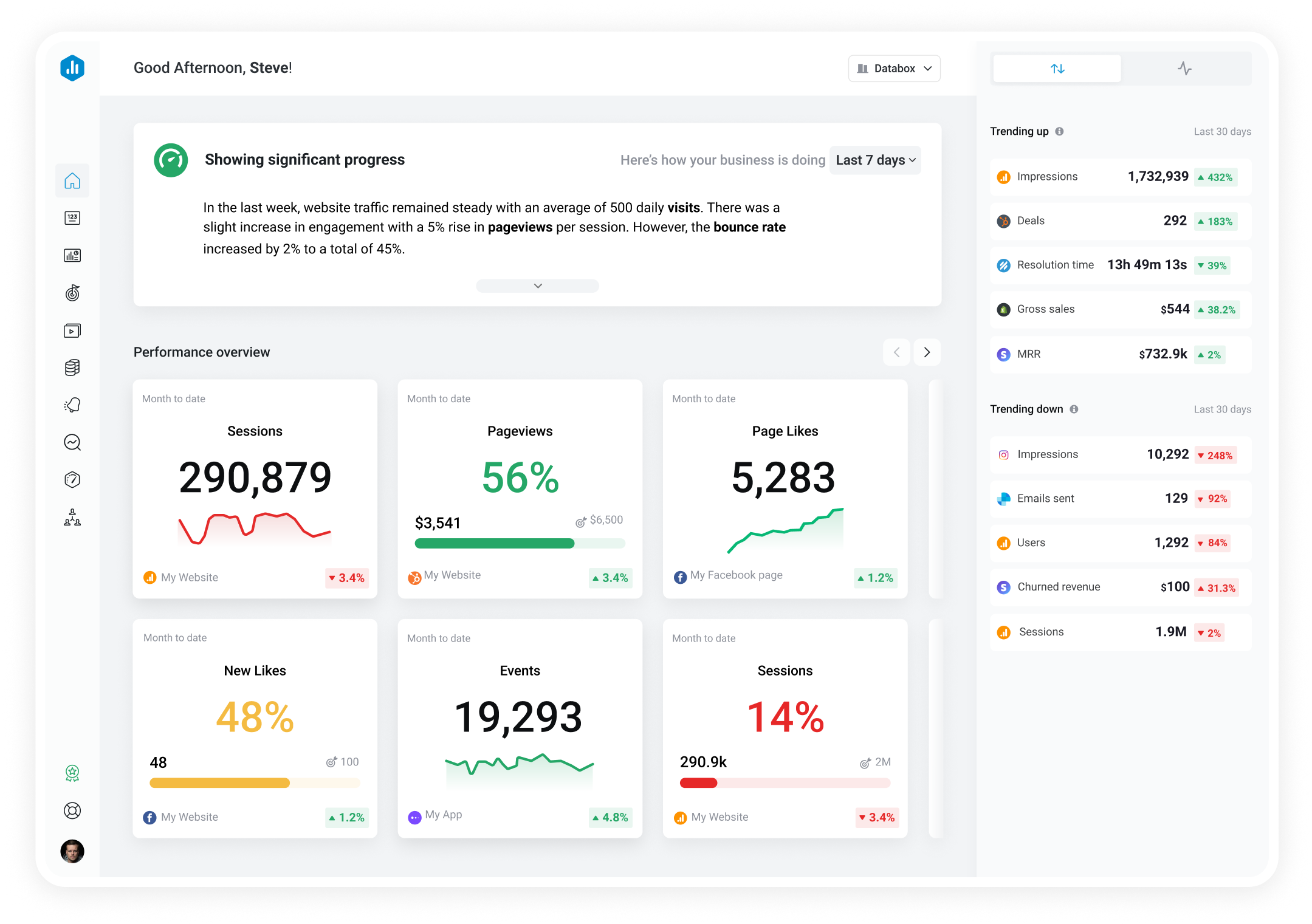Track all of your key business metrics from one screen
GET STARTED
 QuickBooks
Quantity (Cash) by Product
QuickBooks
Quantity (Cash) by Product The Quantity by Product metric indicates how much of a particular item has been sold over a given period of time and helps businesses make informed decisions regarding inventory management and purchasing.
With Databox you can track all your metrics from various data sources in one place.

Used to show comparisons between values.
Databox is a business analytics software that allows you to track and visualize your most important metrics from any data source in one centralized platform.
To track Quantity (Cash) by Product using Databox, follow these steps:
 Goals
Goals Scorecards
Scorecards Metric Digest
Metric Digest Metric Builder
Metric Builder Data Calculations
Data Calculations Performance Screen
Performance Screen